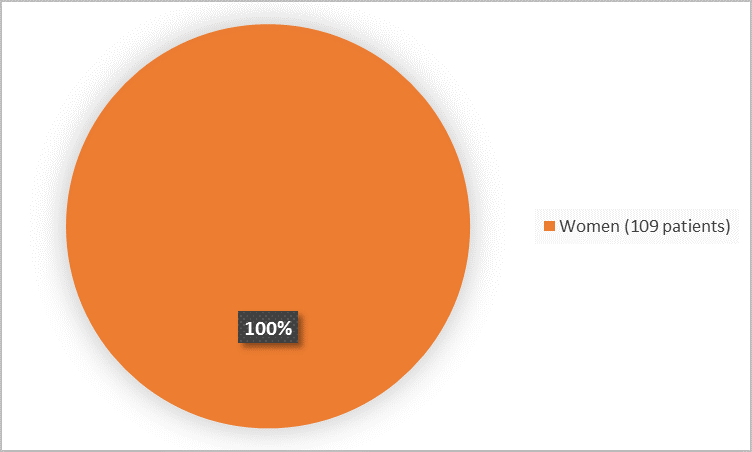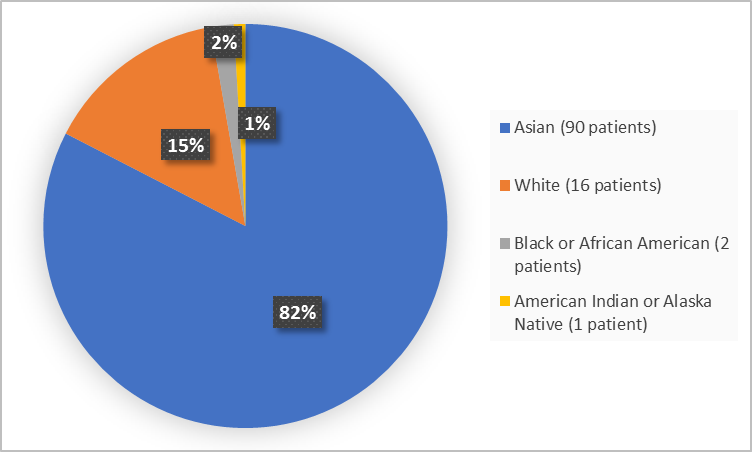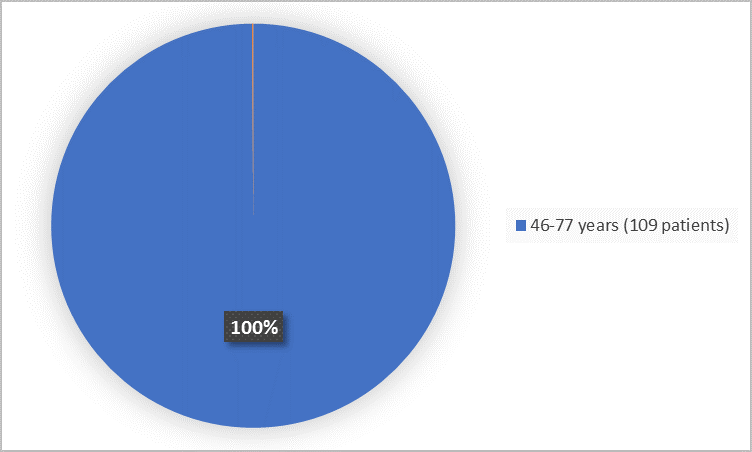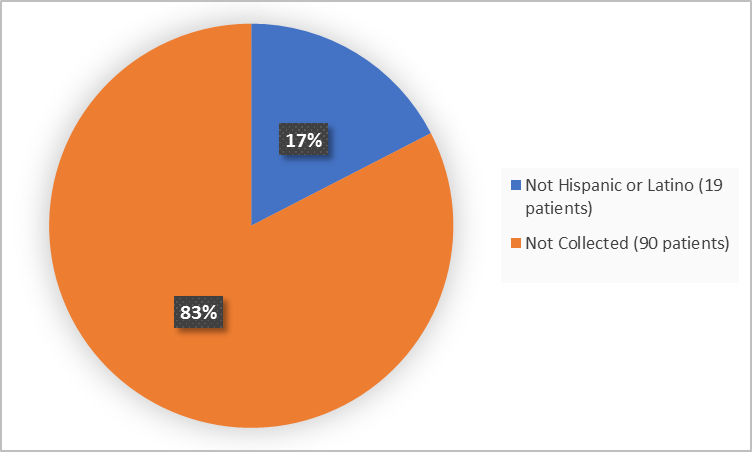Drug Trial Snapshot: CERIANNA
HOW TO USE THIS SNAPSHOT
The information provided in Snapshots highlights who participated in the clinical trials that supported the FDA approval of this drug, and whether there were differences among sex, race and age groups. The “MORE INFO” bar shows more detailed, technical content for each section. The Snapshot is intended as one tool for consumers to use when discussing the risks and benefits of the drugs.
LIMITATIONS OF THIS SNAPSHOT:
Do not rely on Snapshots to make decisions regarding medical care. Always speak to your health provider about the risks and benefits of a drug. Refer to the CERIANNA Package Insert for complete information.
CERIANNA (fluoroestradiol F 18)
(Ser’ee’ an’ naa)
Zionexa US Corp
Approval date: May 20, 2020
DRUG TRIALS SNAPSHOT SUMMARY:
What is the drug for?
CERIANNA is a drug for the visual detection of estrogen receptor (ER)-positive lesions in addition to tissue biopsy in patients with recurrent or metastatic breast cancer.
How is this drug used?
CERIANNA is injected into a vein by a healthcare provider in preparation for an imaging test (called positron emission tomography scan or PET scan) to detect the lesions. CERIANNA is to be used in addition to a tissue biopsy.
What are the benefits of this drug?
CERIANNA detects ER-positive lesions on PET scan images of patients with breast cancer.
What are the benefits of this drug (results of trials used to assess efficacy)?
The effectiveness of CERIANNA for detecting ER-positive non-primary breast cancer lesions was based primarily on two on published trial reports of fluoroestradiol F 18 (FES) in which the image results were compared to the biopsy results.
In Trial 1 an image reader performance for distinguishing between ER-positive and ER-negative FES uptake was compared to biopsy in 85 patients. Of the 47 patients with positive biopsy (Allred score ≥ 3), 36 were positive on imaging (majority reader score = 3). Ten of 11 patients with false negative imaging had Allred scores between 3 and 6. Of the 38 patients with negative biopsy, all 38 were negative on imaging.
Trial 2 in 13 patients showed similar results.
CERIANNA Prescribing Information
Were there any differences in how well the drug worked in clinical trials among sex, race and age?
Analyses of sex, race and age differences were not conducted.
Were there any differences in how well the drug worked in clinical trials among sex, race, and age groups?
Subgroup efficacy analyses were not conducted because of the small sample sizes and incomplete demographic data.
What are the possible side effects?
CERIANNA is a radioactive drug which may increase the risk of lifetime radiation exposure.
The most common side effects of CERIANNA are injection site pain, and taste change.
What are the possible side effects (results of trials used to assess safety)?
The safety of FES was evaluated from published clinical studies of 1207 patients with breast cancer receiving at least one FES administration.
The most common adverse reactions that occurred at rate <1% were injection site pain and dysgeusia.
CERIANNA Prescribing Information
Were there any differences in side effects among sex, race and age?
Analyses of sex, race and age differences were not conducted.
Were there any differences in side effects of the clinical trials among sex, race, and age groups?
Subgroup analyses of the adverse reactions were not conducted because of the low rate of adverse reactions in the trials and incomplete demographic data.
WHO WAS IN THE CLINICAL TRIALS?
Who participated in the clinical trials?
The FDA approved CERIANNA based on evidence from the trials data published in the medical journals. Detailed demographic data from these trials are, for the most part, incomplete.
Published data of 1207 patients from multiple trials conducted all over the world provided information about the side effects of CERIANNA.
Presented below are data from two trials that provided information for the benefits of CERIANNA. One trial was conducted at one site in South Korea and second trial was conducted at one site in the United States.
Figure 1. Demographics by Sex
FDA Review and Published Literature
Figure 2. Demographics by Race
FDA Review FDA Review and Published Literature
Figure 3 summarizes the percentage of patients by age group in the clinical trial.
Figure 3. Demographics by Age
FDA Review FDA Review and Published Literature
Figure 4. Demographics by Ethnicity
FDA Review FDA Review and Published Literature
Who participated in the trials?
The table below summarizes demographic information from the two trials that provided data for efficacy evaluation.
Table 1. Trials Demographics (enrolled population)
|
Demographic Characteristic |
Trial 1 |
Trial 2 |
TOTAL |
|---|---|---|---|
|
Sex, n (%) |
|||
|
Women |
90 (100) |
19 (100) |
109 (100) |
|
Race, n (%) |
|||
|
Asian |
90 (100) |
0 |
90 (83) |
|
White |
0 |
16 (84) |
16 (15) |
|
Black or African American |
0 |
2 (11) |
2 (2) |
|
American Indian or Alaska Native |
0 |
1 (5) |
1(1) |
|
Age, years |
|||
|
Median (min, max) |
55 (46, 60) |
62 (38-77) |
NE (38-77) |
|
Age group, n (%) |
|||
|
<65 years |
90 (100) |
NE |
NE |
|
≥65 years |
0 |
NE |
NE |
|
Ethnicity n (%) |
|||
|
Hispanic or Latino |
0 |
0 |
0 |
|
Not Hispanic or Latino |
0 |
19 (100) |
19 (17) |
|
Not Collected |
90 (100) |
0 |
90 (83) |
|
Region n (%) |
|||
|
US |
0 |
19 (100) |
19 (17) |
|
South Korea |
90 (100) |
0 |
90 (83) |
NE=Not estimable
FDA Review and Published Literature
How were the trials designed?
The benefit of CERIANNA was based primarily on the data from two published clinical trials (Chae et al.2019 /NCT01986569 and Peterson et al.2014 /NCT00602043). In the trials, all patients with recurrent or metastatic ER-positive breast cancer received CERIANNA prior to PET scan imaging. In the trials, PET scan images were read as ER-positive and ER-negative by readers who had no knowledge about patient’s condition and compared to tissue biopsy results.
Side effects of CERIANNA were collected from multiple published trials.
How were the trials designed?
The ability of CERIANNA imaging to detect ER-positive non-primary breast cancer lesions was evaluated based on the published results from two clinical trials in women with histologically confirmed invasive breast cancer.
Trial 1 (Chae et al. 2019) was a prospective, non-randomized, single-center trial. Three image readers were blinded to all clinical information, except for the location of the largest biopsied lesion, for which pathologists independently provided an Allred score (0 to 8). The image readers scored the intensity of FES uptake on a three-point scale relative to normal biodistribution as either “decreased,” “equivocal,” or “increased” (1 to 3). Image reader performance for distinguishing between ER-positive and ER-negative FES uptake was compared to biopsy.
Trial 2 (Peterson et al. 2014) was a single-center study that evaluated agreement between FES PET and biopsy results.
1 Chae, SY, SH Ahn, SB Kim, S Han, SH Lee, SJ Oh, SJ Lee, HJ Kim, BS Ko, JW Lee, BH Son, J Kim, JH Ahn, KH Jung, JE Kim, SY Kim, WJ Choi, HJ Shin, G Gong, HS Lee, JB Lee, and DH Moon Diagnostic accuracy and safety of 16 alpha-[(18)F]fluoro-17beta-oestradiol PET-CT for the assessment of oestrogen receptor status in recurrent or metastatic lesions in patients with breast cancer: a prospective cohort study, Lancet Oncol 2019; 20(4):546-555.
2 Peterson, LM, BF Kurland, EK Schubert, JM Link, VK Gadi, JM Specht, JF Eary, P Porter, LK Shankar, DA Mankoff, and HM Linden, 2014, A phase 2 study of 16alpha-[18F]-fluoro-17betaestradiol positron emission tomography (FES-PET) as a marker of hormone sensitivity in metastatic breast cancer (MBC), Mol Imaging Biol 2014; 16(3):431-440.
GLOSSARY
CLINICAL TRIAL: Voluntary research studies conducted in people and designed to answer specific questions about the safety or effectiveness of drugs, vaccines, other therapies, or new ways of using existing treatments.
COMPARATOR: A previously available treatment or placebo used in clinical trials that is compared to the actual drug being tested.
EFFICACY: How well the drug achieves the desired response when it is taken as described in a controlled clinical setting, such as during a clinical trial.
PLACEBO: An inactive substance or “sugar pill” that looks the same as, and is given the same way as, an active drug or treatment being tested. The effects of the active drug or treatment are compared to the effects of the placebo.
SUBGROUP: A subset of the population studied in a clinical trial. Demographic subsets include sex, race, and age groups.




